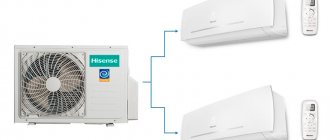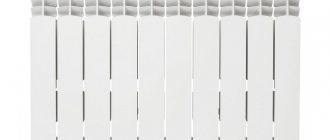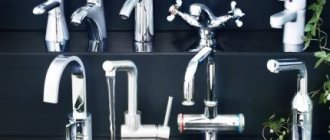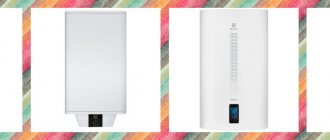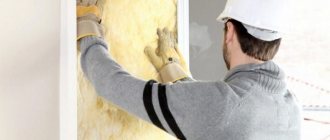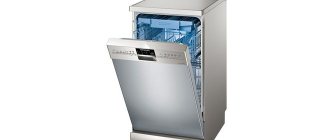Author of the article
Svoboda Igor Nikolaevich
Reading time: 6 minutes
AA
Recently, electric heated floors have become especially popular, in particular among residents of high-rise buildings. This is due not only to their practicality and adding comfort to the home interior, but also to the fact that the installation of warm water floors is actually prohibited.
Such floors can be combined with any type of floor covering, they distribute heat evenly, their installation does not require special knowledge and professional skills, they are silent in operation and have a long service life.
Caleo
| Manufacturer: South Korea | |
| Rating: 4.9 out of 5 | |
| Cost: from 4,780 rub. |
The Korean manufacturer Caleo initially produced film-type infrared floors. Today, based on the analytical data of the consulting and marketing company Step by step, we can conclude that this brand is in greatest demand in the Russian Federation and the CIS countries.
Sales of Caleo products in local markets were estimated at 60%.
Consumers who prefer KCaleo floors like the following advantages:
- simplicity of installation and ease of operation;
- low cost;
- Along with the film, the kit contains a complete set of parts necessary for installation.
Expert opinion
Afanasyev Mikhail Yurievich
Leading engineer of a company engaged in the production of energy-saving heating equipment.
Reference. The manufacturer has many collections. Among them there are options for installation with economical energy consumption, especially resistant to high humidity and durable with a service life of 50 years or more.
Caleo Line 130-0.5-4.0
Caleo Line warm floors are suitable for any standard room - corridor, bedroom, children's room, living room.
The width of the infrared film is 50 cm. This model is one of the easiest to install.
This option is perfect for those who want a good quality product at an affordable price.
Advantages:
- energy savings up to 20%;
- suitable for installation under linoleum, parquet, laminate and carpet;
- installation does not require screed or special glue;
- anti-allergenic effect;
- insulation, durable contact clamps and necessary connecting wires are included in the kit;
- power – 520 W;
- heating area – 4 m2;
- The kit includes clear, simple instructions;
- heat does not dry out the air, creating “living” warmth;
- warranty period – 15 years.
Electric heated floor
Electric heated floors are divided into:
- Cable. The heating element in them is a resistive heating cable with a conductive core protected by a sheath.
- Heating mats – cable on a mesh backing.
- Infrared film floors – film with carbon stripes.
- Infrared rods. The heating element is a carbon rod.
Q term
| Manufacturer: South Korea |
| Rating: 4.85 out of 5 |
| Pricing policy: from 530 rubles per linear meter |
Another great option for infrared heated floors. The manufacturer began supplying products to Russian markets in 2000. Over the short period of its existence, the company has established itself as reliable, with a responsible approach to the selection of the quality of materials used in production.
The surface of the Korean film emits infrared rays, which do not have a negative effect on human health and do not dry out the air.
Expert opinion
Afanasyev Mikhail Yurievich
Leading engineer of a company engaged in the production of energy-saving heating equipment.
Important! When installing such a heated floor, you should remember the need to install a thermostat, which will be used to control the heating system.
Criterias of choice
The following technical data are important factors.
- Operating voltage. Optimal values 220-240 V.
- Power consumption. Shows how much electricity is needed. The minimum value is within 150 W per square meter, the maximum is 230 W.
- Heating temperature for heating systems and the floor surface above the system. Most electric floors are designed to heat the surface to 30-35 degrees. The recommendations of professionals boil down to the fact that this is enough to make the environment feel comfortable. In addition, if the numbers are higher, the energy consumption is higher, and you won’t be able to save.
- Heating speed. On average 15-20 minutes.
- Dimensions (length and width). The minimum strip width on the market is 38 cm, the maximum is 1 meter. The length of the rolls reaches 150 meters. If you need to process non-standard areas or make bends, then you should ask what the cutting step is. There are pieces measured in square meters, which are enough for a whole room without cutting.
- Material thickness. Modern specimens are limited to a few millimeters.
- IR wavelength. Perhaps the most important indicator, since short waves are harmful to health. Optimal parameters are from 5 to 20 microns.
- Heating element. Carbon or graphite.
- Security features. What to pay attention to: additional insulation, overheating protection, self-regulation, fire resistance, grounding.
- Set of accessories for installation. Customer experience shows that complete equipment always simplifies the purchasing and installation process.
Film Q-Term 100
This type of thermal film is quite popular among buyers due to its quality and versatility.
The film can be installed not only under the floor covering, but also in the ceiling and walls.
When laying IR film, no special skills are needed; even a beginner can handle it. In 2 days you will be able to lay about 100 m2 of film.
Advantages:
- saving. Average power consumption is 60 W per hour;
- no screed required for installation. Immediately after laying the floor, you can install the floor covering;
- budget cost (4-5 times lower in price than boiler equipment);
- if damaged, only the deformed section will cease to function, the rest of the structure will remain functional;
- the film does not oxidize and is not subject to corrosion processes;
- warranty – 15 years;
- width – 1 m;
- all elements are fireproof.
Scope of application
It can effectively cope with the function of the main heat source only in regions with a mild climate or when it is not very cold outside. Otherwise, it will be effective only as temporary, local or emergency heating.
It is worthwhile to dwell separately on local heating. IP allows you to set individual thermal conditions in different areas of the same room. If circumstances so require, the system can be partially disabled.
The scope of their application extends beyond residential or public premises. They are successfully installed in any place where it is difficult to install central heating, for example, garages, greenhouses or sheds.
12 volt infrared film helps to safely heat places where it is not recommended to install an infrared system with a voltage of 220 V: from car seats to the bathroom floor or a rug for a four-legged pet.
Heat plus
| Manufacturer: | South Korea |
| Rating: 4.65 out of 5 | |
| Price: | from 1750 rubles per linear meter |
The Korean manufacturer of infrared heating Heat plus is considered a novelty in this area and has no analogues throughout the world. All company systems are made from environmentally friendly materials and are completely safe for human health. The high-tech film consists of 8 nanolayers, its thickness is 0.4 mm (for comparison, many IR films boast only 2-4 layers).
Compared to gas, electric heating is much easier to install, control and operate safely. Installation of thermal film is carried out under a finished floor covering (linoleum, carpet, parquet, laminate). You can connect the insulation system on the day of installation.
Expert opinion
Afanasyev Mikhail Yurievich
Leading engineer of a company engaged in the production of energy-saving heating equipment.
Reference. With infrared floor heating, the efficiency of the system is 87-95%, with an energy consumption of 0.14 kW per hour - these figures are much higher than those of a convector and boiler.
HEAT PLUS 13 APN-410-silver
In the production of the film, the latest technology is used using a dense carbon layer, due to which the service life is increased to 50 years, and the film can be used regardless of conditions.
HEAT PLUS film has the Japanese JET fire safety certificate, an advantage no other manufacturer can boast of.
Advantages:
- saving. Energy consumption – about 40 W per hour;
- easy installation, which you can handle yourself, without the help of professionals;
- quick installation (depending on the square footage - from 2 to 10 hours);
- maximum permissible temperature – up to 70 degrees;
- tape width – 1 m;
- suitable for any type of floor covering;
- warranty period – 15 years;
- thickness – 0.4 mm.
Infrared carbon floors
Infrared floors consist of heating elements filled with a carbon mixture and fixed to a polypropylene base. When exposed to current, carbon emits heat waves with a length of 8–14 microns; the waves pass through the floor covering and warm up the objects in the room (the air only slightly). A room heated by an infrared carbon floor is always very comfortable - there is no dry air, which is why we suffer so much in winter.
RavaFORUMHOUSE Member
It heats up objects: tables, stairs, walls, that’s the whole point. You open the windows wide, ventilate, and when you close everything, it’s warm again. Because not only the air is warm, but everything around it.
Infrared floors are not afraid of frost: you can come to a cold country house in winter for the weekend after a week of hellish minuses, turn on the system and it will work normally, and a comfortable temperature will be established very quickly (the system enters operating mode in 5-7 minutes, but it also cools down such a floor immediately).
Film and rod floors have their own characteristics.
| Film floor | Rod floor |
| Installed without wet processes, on a dry, flat surface under the finishing coat. Installation is quick, with the ability to dismantle the system and use it again. | Laying is carried out in a screed or a layer of tile adhesive (2 cm) with mandatory thermal insulation of the rough base. Foil materials are not allowed for the coating substrate. |
| It is not recommended under carpet, carpet tiles, linoleum on felt - these coatings reduce the heating efficiency several times. Parquet and solid boards are possible if the operating temperature of the system is not higher than 28 degrees. | Self-regulating system: if the floor temperature rises in the area under the furniture, the power consumption of the heating elements decreases. And vice versa. |
| It can be cut into pieces and placed arbitrarily - this allows you to heat only some local areas of the room: passages, places where children play, etc. | A core floor can be installed in any room; large furniture and equipment can be placed on top. |
| If any section breaks, the floor will work as before - you won’t even notice it. | Thanks to the parallel connection scheme, the system will operate stably even if several heating elements fail. |
Heating coatings of this type are used to heat stairs and porches in private homes, to prevent the formation of ice.
Teplolux
| Manufacturer: | Russia |
| Rating: 4.5 out of 5 | |
| Price: | from 7430 RUR |
Most infrared heating systems are expensive, and this is the reason that often scares off potential buyers. The Russian manufacturer solved this problem by making a budget version of electric floors without losing quality characteristics. Warming up the room with their help is possible immediately after installation, which will take several hours.
The company does not stand still, and every year it tries to improve its manufacturing technologies and heating systems. Initially, consumers were dissatisfied with the rapid failure of the thermostat. At the moment, this problem has been solved, and the number of positive reviews about the manufacturer is growing rapidly.
Tropix INN 720W/4.5 sq.m Teplolux 2206230
Thermal mats (two-core type) Teplolux TROPIX are universal for all types of floor coverings, including parquet, laminate, porcelain tiles, linoleum, and others.
The thin mat is laid using a special tile adhesive.
Advantages:
- budget price, accessible to everyone; a thin layer of thermomat;
- installation can be performed on either an old or a new base. This parameter is especially relevant when it is necessary to maintain the existing floor thickness;
- power – 750 W, input voltage – 220 W;
- mat width – 0.5 m;
- suitable for all types of floor coverings;
- mat thickness no more than 0.4 cm;
- uniform and rapid heating of the entire surface;
- warranty period – 50 years.
Water heated floor
Water heated floors are the most common system for heating an individual home. Its important component is pipes made of polypropylene or metal-plastic. The system also includes a circulation pump, a manifold-mixer, and three-way valves (according to the number of water circuits).
Here's how this system works: the heated liquid moves along the heating circuit and transfers its heat to the screed. The cooled water goes back, flows into the boiler, heats up again - the cycle repeats. Limiters built into the system prevent the floor from heating above the set temperature.
Pros and cons of a water heated floor system in a private house
| Flaws | Advantages |
| Difficult installation. If using a concrete screed, you need to wait at least a month until it dries completely. Need a boiler room. | Compatible with different types of floor coverings. |
| The initial costs will be several times (3-5) more expensive than an electric floor. | Very effective system. The temperature of the circulating fluid is 35-50 degrees, this greatly reduces heating costs. |
| When this is the only way to heat a house, complex calculations are needed. | May be the only SO at home. |
| In case of leakage, complete dismantling of the covering and removal of the screed will be required. | Does not generate an electromagnetic field. |
| A wide variety of floor coverings are compatible with hydronic heated floors, and you can lay a carpet on it. | Does not dry out the air in the room. |
Water floors are divided according to the type of installation: usually the pipes are poured into a screed, but there are also flooring systems, wooden or polystyrene.
sly2kFORUMHOUSE Member
A 50 mm board is placed on top of the logs, recesses for laying tubes are milled into it, then foil is laid into the recesses (as waterproofing and for better heat distribution), and metal-plastic pipes are laid. All this is covered with boards (20 mm pine), the boards are coated with polyurethane varnish on both sides.
Each type of water heated floor is good in certain conditions.
Lightweight and quickly warmed up, the flooring system is considered an ideal solution for panel houses.
The polystyrene system is recommended for wooden floors.
The concrete system is chosen for capital, powerful buildings. It, as already mentioned, is more expensive, but it is an indispensable element of an energy-efficient home.
Installing a hot water system is an extremely important task: a leak will mean repairing the subfloor, covering and finishing.
Which system is more economical?
To determine cost-effectiveness, consider how the system is used. If the room is heated only with a film floor, the energy consumption is almost half that of a cable electric heated floor.
The following is considered a big disadvantage: after turning off the heating, the room cools down quickly, almost immediately. If we compare infrared flooring with cable flooring in this parameter, then the latter is much more economical.
Cable covered with tie
After disconnecting the cable structure, the room does not immediately cool down, since the screed accumulates heat during operation, and releases it after disconnecting the energy source.
Safety regulations
- You cannot install IR floors under refrigerators and other electrical appliances;
- The minimum distance from the walls must be at least 15 cm;
- To connect, you need to use only factory components that are supplied with the specific type of IR floor;
- When installing, avoid overlapping the film;
- Insulating tape should be applied along the entire perimeter of the contacts and at the ends along the cutting lines;
- Contact clips and unused ends of copper busbars are insulated with butyl tape, 3.5 cm on each side per contact, and covered with insulating tape on top;
- The ends of the temperature sensor are placed in a special recess, previously made under the film.
Material Specifications
The data below on infrared film for heated floors is of an overview, average nature. The specific characteristics of the product must be clarified when purchasing.
The proposed data is sufficient for planning the location of the canvases, marking the base, and calculating power. Based on the technical features, you can understand whether the IR system is suitable for use in specific conditions.
Thermal film performance:
- Roll width is 50-100 cm. For domestic purposes, as a rule, coverings with a width of 50-60 cm are used. When arranging a bathhouse, office or industrial facility - 70-100 cm. The total energy consumption is almost the same, but wider material will cost more.
- Strip length – 6-50 m. The maximum permissible value is determined by the manufacturer. In a long room, it is advisable to make separate connections in halves with the installation of two thermostats.
- Power supply is 220 V. A household single-phase power supply is used.
- Peak power consumption – up to 150-230 Vm. The parameter depends on the manufacturer and type of film. On average, to maintain the room temperature at 21-24°C (30°C on the surface of the film), energy consumption will be 25-45 W/sq.m.
- The melting point of thermal film is 210-250 °C. If all rules for laying heated floors are followed, the surface temperature of the IR coating will never reach critical values.
After switching on, the film heats up to maximum temperature in 2-3 minutes.
The efficiency of long-spectrum infrared rays reaches 90-95%. The efficiency of heating largely depends on the high-quality thermal insulation of the room. In order for the system to warm the room, the area of the thermal film must be at least 70-80% of the floor surface
Historical reference
For the first time, invisible radiation located beyond the red part of the spectrum was discovered by the British astronomer with German roots, William Herschel, in 1800. A little over a century later, our compatriot, physicist A. A. Glagolyeva-Arkadyeva, experimentally obtained a radio wave, the length of which corresponded to the range of infrared radiation. This proved that infrared radiation is a type of electromagnetic waves, it is as natural as the light and radio waves that surround us. Infrared radiation (IR) is electromagnetic radiation with shorter wavelengths than visible light (from 0.8 microns to 1-2 mm). Infrared waves are emitted by any heated bodies; in theory, they are understood as bodies with a temperature higher than absolute zero (-273.15⁰С), therefore IR radiation is thermal. However, some substances do not transmit this type of rays, for example, water. Infrared radiation is divided into several regions according to wavelength, and the wavelength depends on the temperature of the emitter (heated object):
- Short wavelength – 0.74 – 2.5 microns.
- Medium wave – 2.5 microns – 50 microns.
- Long wavelength – 50 microns – 2000 microns.
The intensity and nature of the impact of ICI on living organisms depends on the wavelength and its penetrating ability; while long waves are beneficial and are widely used in medicine, short waves, on the contrary, are destructive. With prolonged exposure, not only heat stroke and burns are possible, but also brain damage, since short rays penetrate the body several cm and cause overheating of internal organs. Short-wave IR emitters with temperatures ranging from 100⁰C are distinguished; these can be industrial units and ordinary household heaters, in which the spiral is not protected by a special diffusing screen.
As for the relationship between theory and practice, it is direct - the heating elements of an infrared heated floor do not heat up to 100⁰ and produce safe long waves. Therefore, the categorical statements of opponents of this system about its harmfulness are groundless. But marketing praises about the undoubted benefits are also far from the truth - the useful range will dampen most floor coverings. Infrared heated floor is an alternative heating system with its own advantages and disadvantages, and not a way to turn a house into a physiotherapy room.
Connection of power wires
The connection of the cut supply wires into a single system is carried out using a VVGng installation wire, connecting sleeves in a heat-shrinkable tube and insulating material (heat-shrinkable tubes or bitumen strips), which come complete with the core floor.
The wires are fastened together using sleeves in a heat-shrinkable tube and heat-shrinkable tubes as follows:
- remove the insulation from the cut wire by about 1 cm;
- put a sleeve in a heat-shrinkable tube onto the wire;
- crimp the sleeve with pliers;
- put a heat-shrinkable casing on the installation wire;
- insert the bare end of the mounting wire into the sleeve on the other side and crimp it with pliers;
- use a construction hairdryer to heat the sleeve until it shrinks completely;
- check the strength of the connection by tugging lightly;
- slide the heat-shrinkable casing onto the sleeve;
- shrink the cambric using a hair dryer.
Sometimes, instead of heat-shrinkable casing, bitumen strips are used, and instead of sleeves in a heat-shrinkable tube, metal clips/contacts are used.
After assembling all the contacts, the IR rod floor is connected to the thermostat. A temperature sensor is also connected to it, which manufacturers recommend installing inside the corrugated hose, hidden in the grooved recess of the screed. This is done to access the sensor if it needs to be replaced.
After a positive test, construction of the flooring begins.



